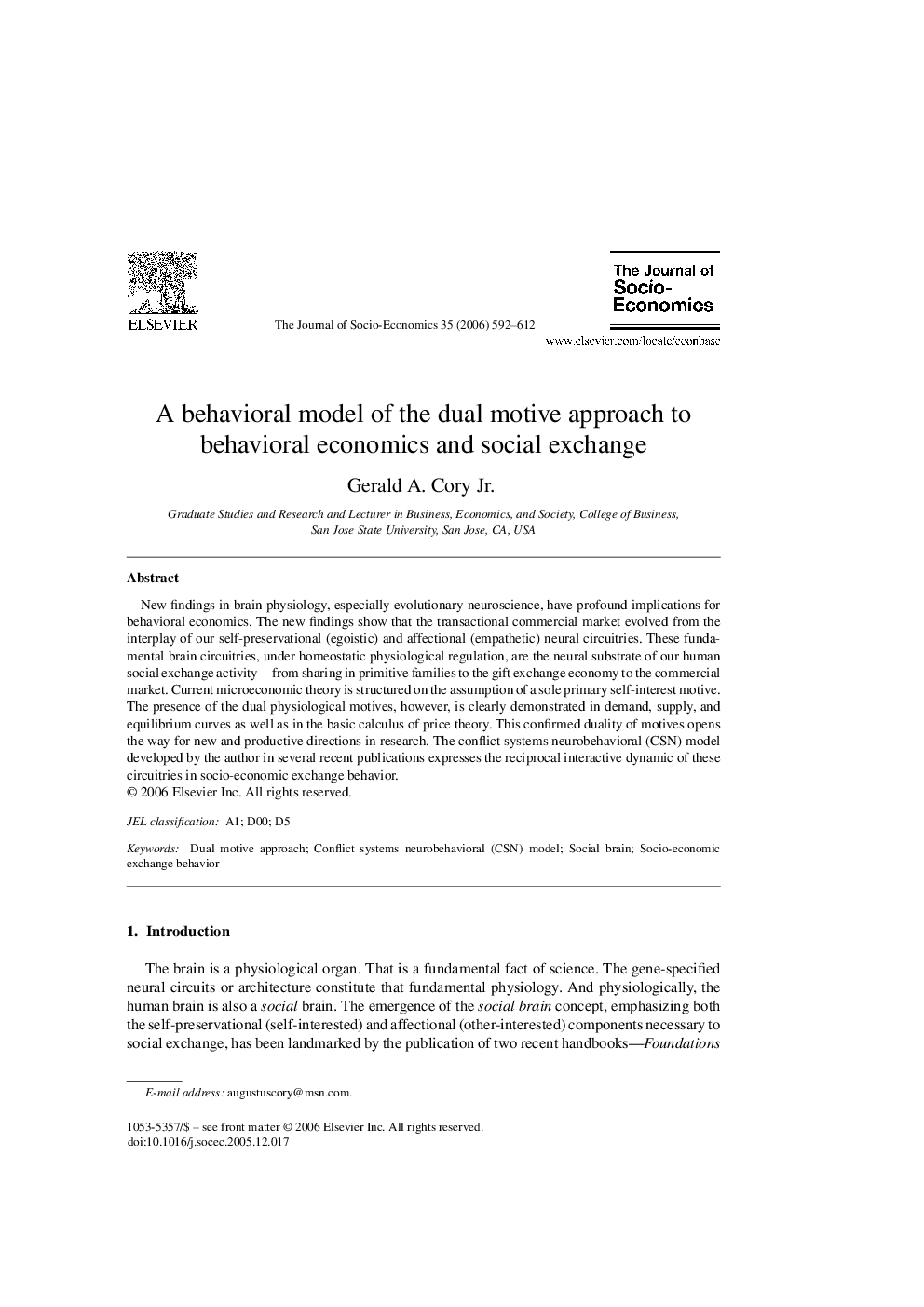| Article ID | Journal | Published Year | Pages | File Type |
|---|---|---|---|---|
| 970335 | The Journal of Socio-Economics | 2006 | 21 Pages |
New findings in brain physiology, especially evolutionary neuroscience, have profound implications for behavioral economics. The new findings show that the transactional commercial market evolved from the interplay of our self-preservational (egoistic) and affectional (empathetic) neural circuitries. These fundamental brain circuitries, under homeostatic physiological regulation, are the neural substrate of our human social exchange activity—from sharing in primitive families to the gift exchange economy to the commercial market. Current microeconomic theory is structured on the assumption of a sole primary self-interest motive. The presence of the dual physiological motives, however, is clearly demonstrated in demand, supply, and equilibrium curves as well as in the basic calculus of price theory. This confirmed duality of motives opens the way for new and productive directions in research. The conflict systems neurobehavioral (CSN) model developed by the author in several recent publications expresses the reciprocal interactive dynamic of these circuitries in socio-economic exchange behavior.
